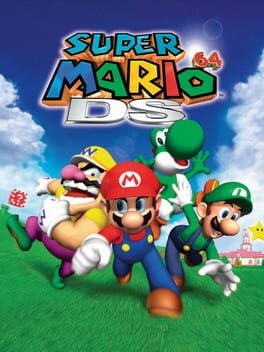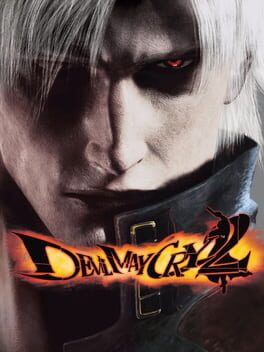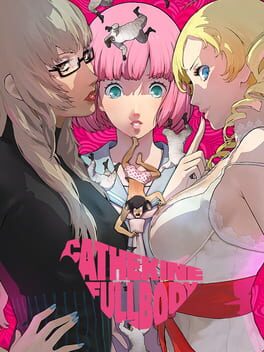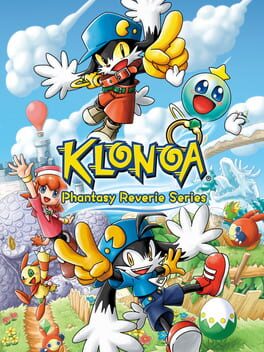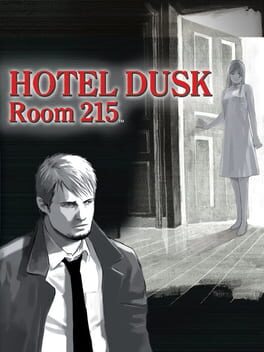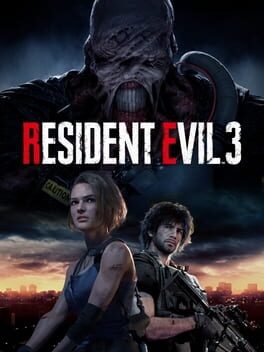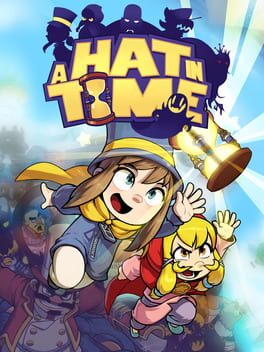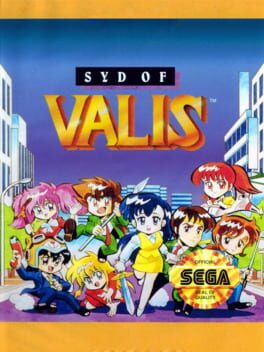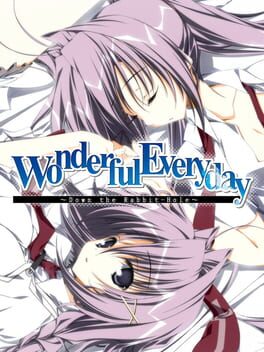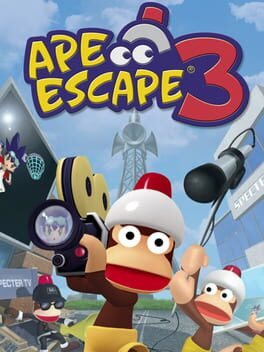5936 Reviews liked by MobileSpider
Super Mario 64 DS
2004
Devil May Cry 2
2003
Far and away the worst game Capcom have ever made, a uniquely fascinating and objectively awful experience from a company whose lesser games are typically let down by near-imperceptible balance flaws for hardcore gameplay enthusiasts; a “bad” Capcom game is normally undone by subpar netcode or an overpowered character, but here we must suffer through actors falling through floors, textures upside-down on walls and enemies who forget to wake up and fight you, perhaps protesting at the unsanitary working conditions they’ve been asked to perform in. Rotten to the core in ways big-developer games are never allowed to be any more, Spanish bootleg-ass Devil May Cry game, fuckin El Diablo Puede llorar: Dos on a cigarette-burned DVD you got at the market this morning, buried deep in a spindle with Animal Soccer World. Hooooly shit dude, it’s funny like a bad movie for the first hour or two, rinsing bosses in minutes without taking damage by just standing still and shooting your guns and cackling maniacally about how little brain you used, but the novelty of a mute Dante’s hexagonal eyes clipping through their pentagonal sockets soon gives way to a depressive despair when you’re begged by a nervous stutter to pull off a series of chaotic wall-runs in order to beat a battle that I’m pretty sure was compiled and saved moments before Hideaki Itsuno had to load copies of this shitpile onto the back of a busted dumptruck headed straight to the cemetery. I persevered past the attack chopper’s infamy in hope of more epic-fail frivolity but was only rewarded with more mechanical misery; being able to activate Devil Trigger amidst what appears to be a knockdown state and have it expire before you can even jank yourself to your feet is a fun five minute feat, but my remaining shreds of self-respect prevented me from subjecting myself to ten more hours of bosses you can beat by simply walking behind them. Huge admiration for Capcom putting this in the HD Collection, presumably as a cautionary tale for generations to come about what happens when you release a CAG without combos, care or competence. Drakengard, eat your dragonheart out.
Catherine: Full Body
2019
Catherine: Full Body tells a compelling story with decently fun gameplay. I liked it enough to play it a second time for another ending, and I plan on going back in the future to get all of the other endings. I also liked the addition of auto play on subsequent playthroughs. I will admit that I wish the game had lasted just a little longer even though I think it is probably the perfect length for a puzzle game. Overall, its a solid game.
Not a legitimate review (because I just played the first world of both games), but I want to throw my hat into this ring of fire I see brewing here.
I'm willing to admit that the graphics can look a bit cheap, asset-wise. I personally think that the original Klonoa 1 looks much better than the Wii version (which this game's remake is clearly based off of). I do think that there's an argument to be made against Klonoa 2, dropping that game's cel-shaded characters for more consistent models between the two games. I think the one thing I can unanimously agree on is that the game feels a bit too bright, lighting-wise. Some of that visual atmosphere has definitely been lost in the transition.
But on the other hand, there's an attention to detail that I think would be shameful to ignore. Everything is colorful, whimsical, and animated. For crying out loud, they kept the title screen easter eggs in Klonoa 2. The level design remains untouched as far as I can tell, and that's ok in my eyes because it never needed fixing.
There's still definitely some modern gaming scum dripping off this title though. Extra outfits are cute, holding them as $20 DLC for a $40 game is not. The game assaults you with EULAs once you hit the title screen (no Bamco, you don't get my personal information). I don't know why every cutscene needs the "skip" and "speed up" buttons present at all times. It's not the most distracting thing, but like, shoo, shoo, I'm trying to enjoy the story!
Lastly, I understand the plea for the preservation of the original titles, but I see it from this perspective:
If you want to play the original Klonoa: Door to Phantomile, you have three choices. Buy it digitally for PS3/PSP/Vita (this choice will likely disappear in the near future), sell a kidney so you can afford an official copy, or emulate it. If you want to play the Wii version of Klonoa, you either sell your other kidney, or you emulate it. If you want to play the original Klonoa 2, you either sell your secret third kidney, or you emulate it.
It might hurt for some people to hear this, but most consumers tend to take the most convenient option. I don't swear allegiance to companies, but I'm personally just glad that these games are being preserved in ANY capacity. I consider the quality high enough to warrant my recommendation. If you haven't played these games and want to know what all the chatter is about, I believe that you're doing yourself a disservice by not picking this up.
EDIT: Finished both titles. I personally found Klonoa 2's remaster more enjoyable. Just make sure to turn off bloom in the settings, it helps combat the extreme brightness. Door to Phantomile was fairly enjoyable, but as a retooling of the Wiimake, I have to say that I still prefer the PS1 original overall. Something felt...off about how Klonoa controlled in that remaster. Nothing unplayable though, I still beat the Extra Vision in just under 5 minutes. I'm an old pro.
I'm willing to admit that the graphics can look a bit cheap, asset-wise. I personally think that the original Klonoa 1 looks much better than the Wii version (which this game's remake is clearly based off of). I do think that there's an argument to be made against Klonoa 2, dropping that game's cel-shaded characters for more consistent models between the two games. I think the one thing I can unanimously agree on is that the game feels a bit too bright, lighting-wise. Some of that visual atmosphere has definitely been lost in the transition.
But on the other hand, there's an attention to detail that I think would be shameful to ignore. Everything is colorful, whimsical, and animated. For crying out loud, they kept the title screen easter eggs in Klonoa 2. The level design remains untouched as far as I can tell, and that's ok in my eyes because it never needed fixing.
There's still definitely some modern gaming scum dripping off this title though. Extra outfits are cute, holding them as $20 DLC for a $40 game is not. The game assaults you with EULAs once you hit the title screen (no Bamco, you don't get my personal information). I don't know why every cutscene needs the "skip" and "speed up" buttons present at all times. It's not the most distracting thing, but like, shoo, shoo, I'm trying to enjoy the story!
Lastly, I understand the plea for the preservation of the original titles, but I see it from this perspective:
If you want to play the original Klonoa: Door to Phantomile, you have three choices. Buy it digitally for PS3/PSP/Vita (this choice will likely disappear in the near future), sell a kidney so you can afford an official copy, or emulate it. If you want to play the Wii version of Klonoa, you either sell your other kidney, or you emulate it. If you want to play the original Klonoa 2, you either sell your secret third kidney, or you emulate it.
It might hurt for some people to hear this, but most consumers tend to take the most convenient option. I don't swear allegiance to companies, but I'm personally just glad that these games are being preserved in ANY capacity. I consider the quality high enough to warrant my recommendation. If you haven't played these games and want to know what all the chatter is about, I believe that you're doing yourself a disservice by not picking this up.
EDIT: Finished both titles. I personally found Klonoa 2's remaster more enjoyable. Just make sure to turn off bloom in the settings, it helps combat the extreme brightness. Door to Phantomile was fairly enjoyable, but as a retooling of the Wiimake, I have to say that I still prefer the PS1 original overall. Something felt...off about how Klonoa controlled in that remaster. Nothing unplayable though, I still beat the Extra Vision in just under 5 minutes. I'm an old pro.
Hotel Dusk: Room 215
2007
Cing's DS output are the type of games you encounter once in a lifetime. Never again will you get a game with a faux-noir narrative with marvelously animated characters presented in the style of a notebook. Nevermore will you get a Nintendo published game that handles people struggling to keep up this facade of them living this average, normal life while they're still aimlessly wandering through life in hopes of maybe finding a way to put their baggage to rest, all to the tone of a nice, jazzy soundtrack. Even if you do manage to find a mystical game that also happens to excel on all these fronts, this imaginary game will never grapple with the same level of pure ingenuity and confidence that is practically bursting out of the seams in some of Cing's works. Cing, and Hotel Dusk especially, does not deserve to be lost to the annals of time. Hotel Dusk, in all its innocent tenaciousness, is an experience that will forever be etched into my memory.
Cing's works tend to blend in with the rest of the DS' absurdly good third-party titles; and while this isn't necessarily a fault, the historic context behind the game sheds some light on how this seemly out-of-nowhere game sticks the landing with flying colors. Hotel Dusk's scenario writer Rika Suzuki is a lady that has had her hand in a lotta pies throughout the decades. From assisting on the production of Dragon Quest I through IV, to pioneering the adventure game genre with the successful J.B. Harold series, Suzuki has always been an influential force within the industry. This is why, from the perspective of Japanese audiences, Cing's foray into the DS represented a new beginning for an established game designer.
With the advent of the DS, Suzuki saw an opportunity to capitalize on her stock of experience and wisdom. With the unconventional nature of Nintendo's brand new handheld and the low-production costs of designing for said platform, Suzuki saw a chance to experiment with the adventure game genre from an unexplored angle. Thankfully Nintendo would see eye to eye with Suzuki's ambitions to an extent. They too saw the implications of the dual-screen setup of their latest handheld, and they more than willing to publish the game so Cing's ideas could come to fruition. This is how Hotel Dusk came to captivate so many unsuspecting DS owners, it's a game, unlike anything else Nintendo has published in the west, not only founded on top of a well of iteration and refinement but a game that's more than enthusiastic about taking full advantage of its unique platform.
However, it'd be disingenuous to solely put the spotlight on Suzuki when Hotel Dusk's director and character animator supervisor Taisuke Kanasaki's phenomenal art direction that really sold audiences on the world of Hotel Dusk. The stylistic boldness of Hotel Dusk's character portraits are not to go unnoticed. Kanasaki's rotoscoped, sketchy character portraits have an awing level of veracity to them. The subtle, small shift in facial annotation and posture establishes this living quality throughout the cast, and it's these same portraits that wordlessly communicate a melting pot of complex emotions these characters have to battle with as the truth and their insecurities claws its way into the light.
In a game as exceptional as Hotel Dusk though, where there's style there's substance, and Cing's down-to-earth, intimate universe has more than enough substance. Hotel Dusk has the foundations of your standard noir work, but this presentation acts an inventive illusion to a deeply interpersonal game. Hell, the game intentionally plays with this with its main character, a former detective turned door-to-door salesman, deceiving noir-esque jacket. The real meat of Hotel Dusk lies in the residents of the shabby, rattletrap Hotel Dusk. Over the course of your exhaustive, one night stay at Hotel Dusk, you will be deconstructing these characters' lives bit by bit, not to expose and critique the core of these characters' baggage, not to get to the bottom of some grand conspiracy, but in order to make amends with your own troubling past.
While you do eventually get to the bottom of a grand conspiracy, this happens more as a result of the cast collectively striving to find a resolution to their shattered past. In defiance to their seemly normal outward demeanor, all these characters are suffering; desperately yet aimlessly pursuing the truth of the days gone by so they can finally break free of their shackles. Hotel Dusk is brimming with people holding regrets, insecurities, trauma, and guilt and they're all brewing to be stirred before the dawn of the new decade.
Where would Hotel Dusk be though, without the constant hum of its understated soundtrack? Composer Satoshi Okubo produced a score oozing with variety and his memorable melodies enrich every moment it decorates. The music never quite oversteps what's happening on screen, instead it comfortably settles into the mood constructed by the script and art direction. The cast's off-beat banter is coated in a layer of swingy electric, the subdued investigation segments are laced in this soothing bossa nova sound, and with each moment of tension, the game sings its heart out and boasters the emotions of the prevailing scene.
With all this in mind though, I can assuredly say Hotel Dusk wouldn't be remembered as the brilliant gem it is today if it was propped by its ingenious presentation that exploits every avenue a dual, touch screen handheld mounts. Hotel Dusk challenges you to discard all petty preconceptions of what video games can do and forces you to hold your DS in the same vein as a notebook, packaged with a handy left-handed and right-handed mode of course. As with your usual adventure game affair, the player is constantly confronted with an assortment of puzzles, halting your progression until you sit down and solve them.
Except with Hotel Dusk, solving puzzles and investigating isn't a conventionally fair of solving riddles, cracking number codes, or deciphering messages. No, instead you will be whittling down notes in your notebook, locksmithing your suitcase with a wire, and revolving a cardboard box around to find a secret letter. While these puzzles aren't brainteasers, their novelty is exceptionally striking and a good portion of them never overstay their welcome. Unfortunately, as with many physically unconventional games, this comes at the consequence of the experience being diluted on anything but original hardware. Many of the game's head-scratchers lose all of their intuitiveness once you drop them out of the context playing on original hardware confides them in. It's a damn shame, but it just goes to show how Hotel Dusk is, bar none, one of the most distinctive experiences you can get your hands on.
Yet, while Cing's confidence is deserving of great praise and respect, it sometimes comes at the cost of breaking the game's cohesion. When you're working with an unconventional gameplay device, you have to offer some leeway to the player. There has to be enough information to invoke an intuition within their head, leading to them cracking the mystery. Some puzzles in Hotel Dusk break that code of law unfortunately. Every so often, the game contests you with a puzzle that are at least ten degrees more out there compared to the game's usual roadblocks. I would welcome these riddles with a warm embrace if it the game attempted to offer enough contextual information to trigger an intuitive, finally leading you to crack the secret. More often than not, I would solve these puzzles by sheer accident rather than me wrecking my brain, and puzzles of that nature are less satisfying and more anticlimactic. These moments break the established pace of the game, and by extension tragically fractures an otherwise smooth-sailing, immersive experience.
It dismays me that these rare few puzzles aren't the only blemishes on Hotel Dusk's journey and that sometimes the investigating itself turns the game into a monotonous, disconnected experience. At times will find yourself directionlessly roaming around the hotel, entering each and every room and interacting with every little nook and cranny in hopes of finally triggering an event flag. Kyle has something to say about little detail in the you choose to engage with, which quickly transitions from charming to annoying when compounded by Hotel Dusk's painfully slow default text crawl.
It's even more heartbreaking how the game's already numerous pacing issues are exaggerated even further by the forced game's absurdly out-of-place end-of-chapter summary quizzes. These quizzes aren't as aggravating as the other flaws presented, especially given that you have to try to fail at them at times, but their very existence is profoundly baffling. These quizzes often pertain to information that doesn't have any real significance to the game on a thematic level, sometimes even on a plot level, and they feel noticeably out of place in a game where the overarching conflict isn't even the focus. Conjoined by the fact that there are already chapter summaries right in the main character's notebook, the decision to include the segments is just utterly dumbfounding.
Now, with all my aforementioned frustrations, do I still recommend Hotel Dusk? Yes, in fact, I cannot recommend it enough. My grievances with some of its game design decisions does not change how remarkably well every facet of Hotel Dusk comes together to form such a cohesive, unique experience. I fell in love with so many aspects of this game, and it has made me break down and cry and feel for these characters. It's truly a one-of-a-kind game and I am begging you, even if you only have a passing interest in the game, to at least give it a chance before the game becomes inaccessible. No amount of words will be able to articulate how much Hotel Dusk has changed my perspective on the power of handheld games, and the possibilities of video games that are yet to be seen.
Cing's works tend to blend in with the rest of the DS' absurdly good third-party titles; and while this isn't necessarily a fault, the historic context behind the game sheds some light on how this seemly out-of-nowhere game sticks the landing with flying colors. Hotel Dusk's scenario writer Rika Suzuki is a lady that has had her hand in a lotta pies throughout the decades. From assisting on the production of Dragon Quest I through IV, to pioneering the adventure game genre with the successful J.B. Harold series, Suzuki has always been an influential force within the industry. This is why, from the perspective of Japanese audiences, Cing's foray into the DS represented a new beginning for an established game designer.
With the advent of the DS, Suzuki saw an opportunity to capitalize on her stock of experience and wisdom. With the unconventional nature of Nintendo's brand new handheld and the low-production costs of designing for said platform, Suzuki saw a chance to experiment with the adventure game genre from an unexplored angle. Thankfully Nintendo would see eye to eye with Suzuki's ambitions to an extent. They too saw the implications of the dual-screen setup of their latest handheld, and they more than willing to publish the game so Cing's ideas could come to fruition. This is how Hotel Dusk came to captivate so many unsuspecting DS owners, it's a game, unlike anything else Nintendo has published in the west, not only founded on top of a well of iteration and refinement but a game that's more than enthusiastic about taking full advantage of its unique platform.
However, it'd be disingenuous to solely put the spotlight on Suzuki when Hotel Dusk's director and character animator supervisor Taisuke Kanasaki's phenomenal art direction that really sold audiences on the world of Hotel Dusk. The stylistic boldness of Hotel Dusk's character portraits are not to go unnoticed. Kanasaki's rotoscoped, sketchy character portraits have an awing level of veracity to them. The subtle, small shift in facial annotation and posture establishes this living quality throughout the cast, and it's these same portraits that wordlessly communicate a melting pot of complex emotions these characters have to battle with as the truth and their insecurities claws its way into the light.
In a game as exceptional as Hotel Dusk though, where there's style there's substance, and Cing's down-to-earth, intimate universe has more than enough substance. Hotel Dusk has the foundations of your standard noir work, but this presentation acts an inventive illusion to a deeply interpersonal game. Hell, the game intentionally plays with this with its main character, a former detective turned door-to-door salesman, deceiving noir-esque jacket. The real meat of Hotel Dusk lies in the residents of the shabby, rattletrap Hotel Dusk. Over the course of your exhaustive, one night stay at Hotel Dusk, you will be deconstructing these characters' lives bit by bit, not to expose and critique the core of these characters' baggage, not to get to the bottom of some grand conspiracy, but in order to make amends with your own troubling past.
While you do eventually get to the bottom of a grand conspiracy, this happens more as a result of the cast collectively striving to find a resolution to their shattered past. In defiance to their seemly normal outward demeanor, all these characters are suffering; desperately yet aimlessly pursuing the truth of the days gone by so they can finally break free of their shackles. Hotel Dusk is brimming with people holding regrets, insecurities, trauma, and guilt and they're all brewing to be stirred before the dawn of the new decade.
Where would Hotel Dusk be though, without the constant hum of its understated soundtrack? Composer Satoshi Okubo produced a score oozing with variety and his memorable melodies enrich every moment it decorates. The music never quite oversteps what's happening on screen, instead it comfortably settles into the mood constructed by the script and art direction. The cast's off-beat banter is coated in a layer of swingy electric, the subdued investigation segments are laced in this soothing bossa nova sound, and with each moment of tension, the game sings its heart out and boasters the emotions of the prevailing scene.
With all this in mind though, I can assuredly say Hotel Dusk wouldn't be remembered as the brilliant gem it is today if it was propped by its ingenious presentation that exploits every avenue a dual, touch screen handheld mounts. Hotel Dusk challenges you to discard all petty preconceptions of what video games can do and forces you to hold your DS in the same vein as a notebook, packaged with a handy left-handed and right-handed mode of course. As with your usual adventure game affair, the player is constantly confronted with an assortment of puzzles, halting your progression until you sit down and solve them.
Except with Hotel Dusk, solving puzzles and investigating isn't a conventionally fair of solving riddles, cracking number codes, or deciphering messages. No, instead you will be whittling down notes in your notebook, locksmithing your suitcase with a wire, and revolving a cardboard box around to find a secret letter. While these puzzles aren't brainteasers, their novelty is exceptionally striking and a good portion of them never overstay their welcome. Unfortunately, as with many physically unconventional games, this comes at the consequence of the experience being diluted on anything but original hardware. Many of the game's head-scratchers lose all of their intuitiveness once you drop them out of the context playing on original hardware confides them in. It's a damn shame, but it just goes to show how Hotel Dusk is, bar none, one of the most distinctive experiences you can get your hands on.
Yet, while Cing's confidence is deserving of great praise and respect, it sometimes comes at the cost of breaking the game's cohesion. When you're working with an unconventional gameplay device, you have to offer some leeway to the player. There has to be enough information to invoke an intuition within their head, leading to them cracking the mystery. Some puzzles in Hotel Dusk break that code of law unfortunately. Every so often, the game contests you with a puzzle that are at least ten degrees more out there compared to the game's usual roadblocks. I would welcome these riddles with a warm embrace if it the game attempted to offer enough contextual information to trigger an intuitive, finally leading you to crack the secret. More often than not, I would solve these puzzles by sheer accident rather than me wrecking my brain, and puzzles of that nature are less satisfying and more anticlimactic. These moments break the established pace of the game, and by extension tragically fractures an otherwise smooth-sailing, immersive experience.
It dismays me that these rare few puzzles aren't the only blemishes on Hotel Dusk's journey and that sometimes the investigating itself turns the game into a monotonous, disconnected experience. At times will find yourself directionlessly roaming around the hotel, entering each and every room and interacting with every little nook and cranny in hopes of finally triggering an event flag. Kyle has something to say about little detail in the you choose to engage with, which quickly transitions from charming to annoying when compounded by Hotel Dusk's painfully slow default text crawl.
It's even more heartbreaking how the game's already numerous pacing issues are exaggerated even further by the forced game's absurdly out-of-place end-of-chapter summary quizzes. These quizzes aren't as aggravating as the other flaws presented, especially given that you have to try to fail at them at times, but their very existence is profoundly baffling. These quizzes often pertain to information that doesn't have any real significance to the game on a thematic level, sometimes even on a plot level, and they feel noticeably out of place in a game where the overarching conflict isn't even the focus. Conjoined by the fact that there are already chapter summaries right in the main character's notebook, the decision to include the segments is just utterly dumbfounding.
Now, with all my aforementioned frustrations, do I still recommend Hotel Dusk? Yes, in fact, I cannot recommend it enough. My grievances with some of its game design decisions does not change how remarkably well every facet of Hotel Dusk comes together to form such a cohesive, unique experience. I fell in love with so many aspects of this game, and it has made me break down and cry and feel for these characters. It's truly a one-of-a-kind game and I am begging you, even if you only have a passing interest in the game, to at least give it a chance before the game becomes inaccessible. No amount of words will be able to articulate how much Hotel Dusk has changed my perspective on the power of handheld games, and the possibilities of video games that are yet to be seen.
Save Klonoa #KlonoaSweep buy the games legitimately to support the series and prevent it from another painful death. We could get Klonoa 3.
You know, not to diss the backer who’s review was absolutely damning, but 1) I personally found no issue with the framerate throughout my experience with the game so far, 2) while I do agree that the PS1 version is the best way to play Klonoa 1, I would argue that for newcomers, this is certainly a great introduction to the franchise. Being a port of the Wii version means no skidding on platforms that lead to unfair deaths, and that’s really good stuff. And 3) frankly I don’t care about the DLC costumes because they’re not really the main focus of the game, don’t really provide much enhancement to the gameplay and I prefer regular Klonoa anyways.
The remasters have surprised me with how well they present themselves so far: the graphics are vibrant and colourful, bearing more similarity to the PS1 version; Klonoa’s model is also reverted back to the original design and the cutscene dialogue uses the original PS1 audio (although I would’ve gladly appreciated the quality be upscaled as well). Sure, Klonoa isn’t as expressive as his PS1 sprite counterpart due to the limitations of in-game models, and he no longer says Manyah when he gets hit (a downside of porting the Wii version); the Skip Scene button could’ve been hidden as well, but I don’t think those small nitpicks are worth completely trashing this game for. It still controls fine, plays fine, looks amazing for a Unity Engine port, soundtrack still delivers and Klonoa even has idle animations now! Again, I’m not saying this version is better because the PS1 version is clearly superior, I’m just saying that this is still a perfectly acceptable port of one of the greatest games ever made!
I’ll come back to the game as a whole when I’m done, but I’m labelling this game as my favourite game of all time because I consider both Klonoa games to be that as a collective, and putting the Phantasy Reverie Series as a placeholder works for me.
You know, not to diss the backer who’s review was absolutely damning, but 1) I personally found no issue with the framerate throughout my experience with the game so far, 2) while I do agree that the PS1 version is the best way to play Klonoa 1, I would argue that for newcomers, this is certainly a great introduction to the franchise. Being a port of the Wii version means no skidding on platforms that lead to unfair deaths, and that’s really good stuff. And 3) frankly I don’t care about the DLC costumes because they’re not really the main focus of the game, don’t really provide much enhancement to the gameplay and I prefer regular Klonoa anyways.
The remasters have surprised me with how well they present themselves so far: the graphics are vibrant and colourful, bearing more similarity to the PS1 version; Klonoa’s model is also reverted back to the original design and the cutscene dialogue uses the original PS1 audio (although I would’ve gladly appreciated the quality be upscaled as well). Sure, Klonoa isn’t as expressive as his PS1 sprite counterpart due to the limitations of in-game models, and he no longer says Manyah when he gets hit (a downside of porting the Wii version); the Skip Scene button could’ve been hidden as well, but I don’t think those small nitpicks are worth completely trashing this game for. It still controls fine, plays fine, looks amazing for a Unity Engine port, soundtrack still delivers and Klonoa even has idle animations now! Again, I’m not saying this version is better because the PS1 version is clearly superior, I’m just saying that this is still a perfectly acceptable port of one of the greatest games ever made!
I’ll come back to the game as a whole when I’m done, but I’m labelling this game as my favourite game of all time because I consider both Klonoa games to be that as a collective, and putting the Phantasy Reverie Series as a placeholder works for me.
Hotel Dusk: Room 215
2007
Resident Evil 3
2020
I enjoyed my time with this one but yeahhhh. It's not worth $60 at all. Get it on heavy discount, and treat it like DLC for RE2Make, and you'll feel a lot differently about this one. It's also not as tightly made as RE2, and it's especially way more linear than that, though that also applies to the OG in general, from what I'm hearing.
A Hat in Time
2017
Team Ladybug has done it once again, and by "it" I mean Symphony of the Night.
Well actually, while Deedlit's sprite and animations are very much influenced by Alucard in SOTN, and the game has a similar weapon system, this game isn't really structured much like that game at all. It's much more in line with previous games from the team like Luna Nights and Synchronicity, in which backtracking is more for finding power-ups and extras, rather than uncovering a new path to take. I don't mind this at all, I love how focused and compact Team Ladybug's games are, Luna Nights is after all my favorite Metroidvania. But after about 4 of these games, I do find this game less exciting than the previous ones.
Once again, it's a Team Ladybug game with a property I'm mostly unfamiliar with, a lot less familiar than I am with either Touhou or SMT. Lodoss War never really interested me as it seems to be a lot of high fantasy-type stuff that's never been my thing, but it does have a 90's OVA done by Madhouse so it's probably pretty tight. Regardless, Team Ladybug has done an incredible job of rendering these characters and the show's iconography in their style, this might be their best-looking project yet. They always go hard on the sprite work in their games, and there were so many moments where I just had to stop to take in the background and animations. The music, while at first, I found to be a little 'typical' of what they've done in the past, ends up capturing the fantasy setting of the world really well, it's more of what this team does best.
This game controls very similarly to Luna Nights in terms of jump and attack feel, but obviously without any of the time stop mechanics or secondary weapons. The two biggest mechanics in this game are the bow, which can be used for attacks but is more often used for puzzle solving, and the two elemental spirits that can be switched out. Each spirit can absorb projectiles of their respective element as well as deal damage of that element to enemies that may be weak to it. The game often has you switching between the two Ikaruga-style, and it's especially important to do so since attacking with one spirit levels up the other, and when a spirit reaches level 3, it can heal you automatically (and rather quickly, I might add). I found this mechanic neat in Synchronicity, but in this game, it felt a little like busy work. It was a lot more interesting to use it as a way to absorb projectiles and avoid damage while traversing a level in Synchronicity, and instead, in this game you just switch to the element the enemy is weak to and continue attacking like normal, there's no real strategy change needed. Also, the automatic healing feels a little too powerful, especially while in the overworld, especially combined with how often you get save points. Luna Nights' graze system was a healing system that demanded a lot more from the player for the same effect, and since reaching level 3 on your spirits is pretty trivial, it was also a lot more satisfying. Bosses are where spirit switching feels most like Ikaruga, and a problem I kept running into was that it was difficult to immediately tell what spirit I was currently using. The game gives some indicators like the spirit being a sprite following you on screen as well as the color of parts of the UI and your outline, but the sprites in this game are so detailed that these indicators can be easily missed, especially in a heated battle with a ton of projectiles on screen. I'd say this lack of clarity was responsible for a decent amount of my deaths in-game.
While the bosses in this game can be fun, they never reach Luna Nights levels of thrilling or demanding. That might have to do with me being more experienced with these games, or there being less to juggle here than in that game. This makes sense, as we've gone from insanely powerful youkai girls equipped with bullet hell attacks to one-on-one fights against either giant dragons or other characters similar in ability to Deedlit, something a little more "grounded". I think some people will enjoy one or the other more. Personally, I can't see any boss fight here sticking with me as much as the one's in Luna Nights.
I mentioned the bow and arrow a while ago now, and while I think the inclusion of arrow puzzle rooms is odd, I do enjoy the mechanics of bouncing arrows off surfaces and rapidly shooting a bunch at distant enemies. Being able to switch between weapons and bows and experiment with them is neat, as they can have huge differences. I do wish being able to hold different weapons on different hands like in SOTN was in this game, but that's only a minor complaint, and it probably would've hurt the whole balance of the game anyway.
The game's story didn't do much for me, someone who has no familiarity with this series, but there is one aspect of it I'm disappointed in. Like Luna Nights, the main character is not actually traversing the world of the series but instead a constructed labyrinth version of it. As I've learned more about this series, I've come to feel like there's so much more potential in a game set in this universe than to just put me in more corridors of mostly indistinct locations. This didn't feel like a huge problem in Luna Nights, and while I haven't nailed why, I think it's a bit of a letdown that essentially the same conceit from that game is being used again. To be fair, the context is different, and I think the payoff for it at the end was cool. Maybe they simply weren't allowed to make the plot of this game matter too much, so I won't be too down on them for it, but hopefully, the next game from them actually has, you know, a setting. The level settings were so strong in Pharaoh Rebirth and Synchronicity, I would love to return to levels like that.
In the end, if you wanted more of what this team does, you won't be disappointed. For me, it doesn't reach the heights of previous games, but that may just be fatigue from this specific formula that they've had for a couple of games now, as well as the introduction of mechanics I never really gelled with. But really, even their weakest effort is something I would recommend to any fan of the genre. Their latest game, Drainus, seems to be a completely different genre, and while I'm not a shmup I'll gladly check it out someday. Oh yeah, and fuck XBOX PC Game Pass for fucking this game up so hard, literally went and just got the game myself on a separate service in order to verify that the app was just running this game at half speed for no reason.
Well actually, while Deedlit's sprite and animations are very much influenced by Alucard in SOTN, and the game has a similar weapon system, this game isn't really structured much like that game at all. It's much more in line with previous games from the team like Luna Nights and Synchronicity, in which backtracking is more for finding power-ups and extras, rather than uncovering a new path to take. I don't mind this at all, I love how focused and compact Team Ladybug's games are, Luna Nights is after all my favorite Metroidvania. But after about 4 of these games, I do find this game less exciting than the previous ones.
Once again, it's a Team Ladybug game with a property I'm mostly unfamiliar with, a lot less familiar than I am with either Touhou or SMT. Lodoss War never really interested me as it seems to be a lot of high fantasy-type stuff that's never been my thing, but it does have a 90's OVA done by Madhouse so it's probably pretty tight. Regardless, Team Ladybug has done an incredible job of rendering these characters and the show's iconography in their style, this might be their best-looking project yet. They always go hard on the sprite work in their games, and there were so many moments where I just had to stop to take in the background and animations. The music, while at first, I found to be a little 'typical' of what they've done in the past, ends up capturing the fantasy setting of the world really well, it's more of what this team does best.
This game controls very similarly to Luna Nights in terms of jump and attack feel, but obviously without any of the time stop mechanics or secondary weapons. The two biggest mechanics in this game are the bow, which can be used for attacks but is more often used for puzzle solving, and the two elemental spirits that can be switched out. Each spirit can absorb projectiles of their respective element as well as deal damage of that element to enemies that may be weak to it. The game often has you switching between the two Ikaruga-style, and it's especially important to do so since attacking with one spirit levels up the other, and when a spirit reaches level 3, it can heal you automatically (and rather quickly, I might add). I found this mechanic neat in Synchronicity, but in this game, it felt a little like busy work. It was a lot more interesting to use it as a way to absorb projectiles and avoid damage while traversing a level in Synchronicity, and instead, in this game you just switch to the element the enemy is weak to and continue attacking like normal, there's no real strategy change needed. Also, the automatic healing feels a little too powerful, especially while in the overworld, especially combined with how often you get save points. Luna Nights' graze system was a healing system that demanded a lot more from the player for the same effect, and since reaching level 3 on your spirits is pretty trivial, it was also a lot more satisfying. Bosses are where spirit switching feels most like Ikaruga, and a problem I kept running into was that it was difficult to immediately tell what spirit I was currently using. The game gives some indicators like the spirit being a sprite following you on screen as well as the color of parts of the UI and your outline, but the sprites in this game are so detailed that these indicators can be easily missed, especially in a heated battle with a ton of projectiles on screen. I'd say this lack of clarity was responsible for a decent amount of my deaths in-game.
While the bosses in this game can be fun, they never reach Luna Nights levels of thrilling or demanding. That might have to do with me being more experienced with these games, or there being less to juggle here than in that game. This makes sense, as we've gone from insanely powerful youkai girls equipped with bullet hell attacks to one-on-one fights against either giant dragons or other characters similar in ability to Deedlit, something a little more "grounded". I think some people will enjoy one or the other more. Personally, I can't see any boss fight here sticking with me as much as the one's in Luna Nights.
I mentioned the bow and arrow a while ago now, and while I think the inclusion of arrow puzzle rooms is odd, I do enjoy the mechanics of bouncing arrows off surfaces and rapidly shooting a bunch at distant enemies. Being able to switch between weapons and bows and experiment with them is neat, as they can have huge differences. I do wish being able to hold different weapons on different hands like in SOTN was in this game, but that's only a minor complaint, and it probably would've hurt the whole balance of the game anyway.
The game's story didn't do much for me, someone who has no familiarity with this series, but there is one aspect of it I'm disappointed in. Like Luna Nights, the main character is not actually traversing the world of the series but instead a constructed labyrinth version of it. As I've learned more about this series, I've come to feel like there's so much more potential in a game set in this universe than to just put me in more corridors of mostly indistinct locations. This didn't feel like a huge problem in Luna Nights, and while I haven't nailed why, I think it's a bit of a letdown that essentially the same conceit from that game is being used again. To be fair, the context is different, and I think the payoff for it at the end was cool. Maybe they simply weren't allowed to make the plot of this game matter too much, so I won't be too down on them for it, but hopefully, the next game from them actually has, you know, a setting. The level settings were so strong in Pharaoh Rebirth and Synchronicity, I would love to return to levels like that.
In the end, if you wanted more of what this team does, you won't be disappointed. For me, it doesn't reach the heights of previous games, but that may just be fatigue from this specific formula that they've had for a couple of games now, as well as the introduction of mechanics I never really gelled with. But really, even their weakest effort is something I would recommend to any fan of the genre. Their latest game, Drainus, seems to be a completely different genre, and while I'm not a shmup I'll gladly check it out someday. Oh yeah, and fuck XBOX PC Game Pass for fucking this game up so hard, literally went and just got the game myself on a separate service in order to verify that the app was just running this game at half speed for no reason.
Syd of Valis
1992
Mainly just pretty boring and one-note, with a couple irritating bosses thrown in, but at least it's cute. The translation is pretty amusingly poor, and probably the main talking point honestly. The credits weren't even translated over, Yuuko is referred to as "Syd" in all instances, and Syd itself stems from a poor reading of Valis SD (super-deformed, another name for chibi style), the original japanese title. Lots of entertaining fuckups to be seen there.
Hotel Dusk: Room 215
2007
Ape Escape 3
2005
As good of a refinement and expansion to AE2 as you could get. It's working with a very similar balance of minimized platforming in designated catching areas, but is now lead by an even more quirky and creative setting, backed by some banger tracks from the returning Terada. But the coup de grace by far are the costume morphs; they're so damn fun to use and can superfluously fit your tastes of the fly. There's no Nintendo bullshittery of 'this monkey can only be caught with this one' - just pick what you vibe with and fire away. That's not to say there aren't mandatory costume puzzles and said costumes are all balanced, but basically nothing holds you back from tanking through the game as a cowboy if that yees your haw.
Honestly the worst thing I can say about it is the localization? It's well-acted by the VA's, but some of the cutscene dialogue flow weirdly. Also, the US release's monkey names all seem to be directly romanized from their literal JP translations, most of the time. So about 80% of the monkey names are some variation of 'Ukki' or 'Mon', whatever existing JP puns they used didn't translate over, and opportunities for US-specific puns are completely missed. It seems like this isn't an issue for the PAL localization though.
Also the protagonists suck. Kei is somehow more dripless than the average male pokemon protag, and Yumi is kinda just transparently designed by a pedophile - not inappropriate per se, but if you've been in twitter fandom art circles, it checks the boxes on very specific design kinks and flourishes that are SUPER fucking common with lolicon artists. Bleeeehhhhhhhhh.
Honestly the worst thing I can say about it is the localization? It's well-acted by the VA's, but some of the cutscene dialogue flow weirdly. Also, the US release's monkey names all seem to be directly romanized from their literal JP translations, most of the time. So about 80% of the monkey names are some variation of 'Ukki' or 'Mon', whatever existing JP puns they used didn't translate over, and opportunities for US-specific puns are completely missed. It seems like this isn't an issue for the PAL localization though.
Also the protagonists suck. Kei is somehow more dripless than the average male pokemon protag, and Yumi is kinda just transparently designed by a pedophile - not inappropriate per se, but if you've been in twitter fandom art circles, it checks the boxes on very specific design kinks and flourishes that are SUPER fucking common with lolicon artists. Bleeeehhhhhhhhh.
